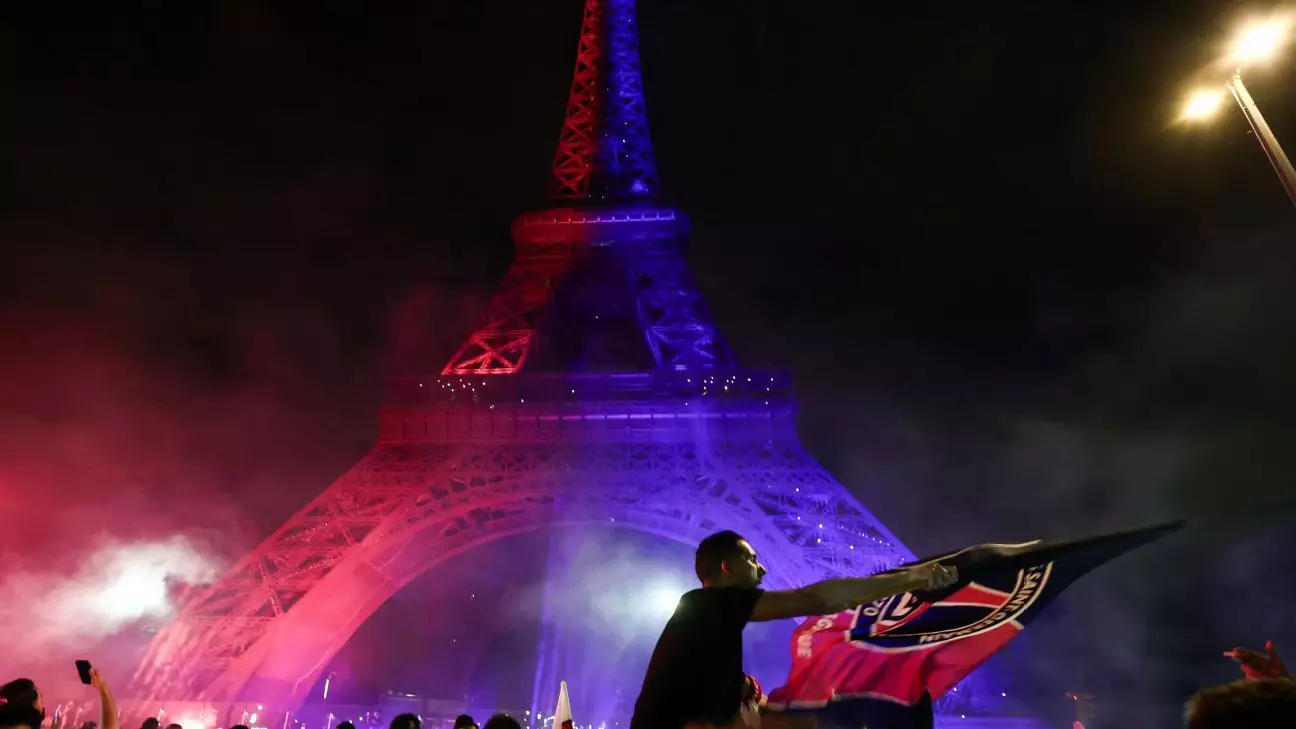In an unprecedented moment for Paris Saint-Germain (PSG), the team celebrated its first UEFA Champions League title with a monumental 5-0 win against Inter Milan. While the victory was meant to usher in a wave of joy across France, the celebrations quickly devolved into chaos, resulting in the loss of two lives and leaving a police officer in critical condition. This stark juxtaposition of elation and tragedy raises fundamental questions about crowd control, public safety, and national security during mass gatherings that celebrate sports.
The night began with the Eiffel Tower illuminated in the vibrant colors of PSG, setting the stage for jubilant festivities. Streets reverberated with cheers as fans gathered, ready to etch this moment into the annals of their club’s history. However, amid the jubilance, violence broke out in various locations, including the small town of Dax, where a 17-year-old fan lost his life in a stabbing incident, and Paris, where another fan was tragically killed in a scooter accident. Each of these moments delineated a dark turn in what should have been a night of collective celebration, demonstrating how quickly jubilation can be extinguished.
The Price of Celebration: Safety vs. Enjoyment
With upwards of 110,000 people expected to flood the Champs-Élysées for the victory parade, the scale of the event necessitated significant security measures. Paris police chief Laurent Nunez announced that extensive precautions were critical as the city sought to mitigate potential violence. However, as history shows, such measures often do not prevent chaos from erupting. During the celebrations, 192 individuals reported injuries, four gravely serious, primarily attributed to fireworks and throngs of unruly attendees.
Despite the captivating allure of PSG’s win and the heartfelt celebrations, the scenes of violence—including looting and arson—paint a grim picture of modern celebrations where zealous fandom can dangerously morph into aggressive behavior. A stark reminder emerged as tear gas and water cannons were employed to quell disturbances near significant landmarks, exhibiting a troubling narrative that clashes with the spirit of community devotion that sports often inspire.
Community and Chaos: A Divided Night
Ironically, the strife on that evening unveiled a divide among the attendees. While some jubilantly reveled in the festive atmosphere at the Place de la Bastille, singing and dancing in solidarity with their fellow fans, others seized the opportunity to commit acts of violence. The coexistence of joy and disorder represented a schism in the fan base itself—those who truly appreciated the accomplishment of PSG’s victory versus those seemingly there to incite chaos.
Nunez attributed the disturbances to a contingent of “thousands of people who came to commit acts of violence” rather than genuinely celebrate the win. This phenomenon is not unique to PSG; history recalls similar instances following sporting events, including France’s World Cup victory in 2018, bringing to light a question many grapple with: how do we cultivate a culture of safety without stifling the excitement that sporting events naturally generate?
The Broader Implications for Public Gatherings
The aftermath of the celebrations prompt a broader discussion on the role of authorities during public events that draw massive crowds. While the thrill of victory invokes a legal and social framework for collective celebration, it simultaneously necessitates robust strategies to ensure public safety that have yet to be effectively established. With incidents of violence surfacing in seemingly joyous occasions, authorities must reevaluate their approach toward event management and crowd control.
Moreover, the impact of such tragedies resonates beyond the immediate events. Families of the deceased grieve significant losses, the injured bear physical and emotional scars, and a once-uplifting celebratory atmosphere becomes marred by the specter of sorrow and chaos. For both fans and the larger community, this serves as a sobering reminder that the celebration of sports is not devoid of potential peril, and it is imperative to establish measures to prevent future calamities while still allowing room for genuine joy and communal spirit.
As cities grapple with the balance of celebration and safety, the haunting question persists: how do we honor the uniting spirit of sports while safeguarding our communities during moments of collective excitement?


Leave a Reply